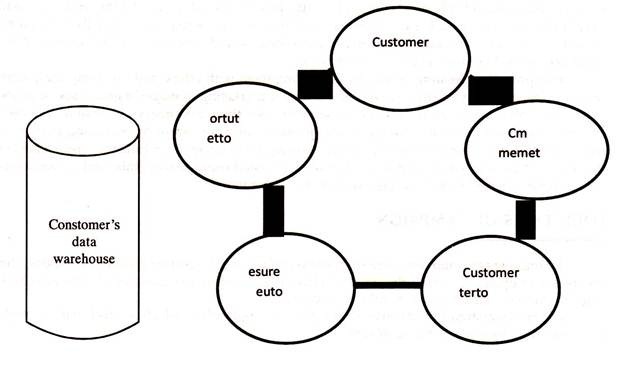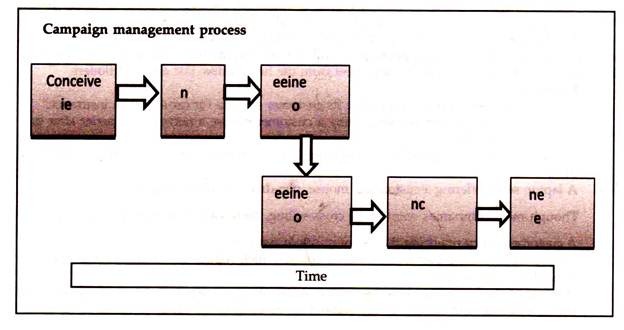After reading this article you will learn about Campaign Management:- 1. Origin of Campaign Management 2. Meaning of Campaign Management 3. Functionality.
Origin of Campaign Management:
Back in the old age of direct marketing, campaign management referred to the planning and execution of a single marketing campaign, which made us of the telephone and /or the postal services. The preparation time for this type of campaign amounted to several weeks if not months.
Now a days, within the framework of CRM, campaign management encompasses the multitude of campaigns that are plant an executed through different channels so that a continuous marketing communication flow is created sometimes these campaigns are devised in the morning and executed that every afternoon. By continuously measuring the effect of every contact “customer touch point” and making adjustments, the dialogue may be continually refined.
This puts the organization in a better position to market its goods and services and develop relationship with the right customers. The goal of campaign management is to interact with prospects and customers at the right movement, with the rights offerings and the right message communicated through the right channels.
Meaning of Campaign Management:
Campaign management software applications allow marketing users to segment groups of customers (and prospective customers) into smaller groups and then specify the interaction that should take place with those individuals. For example, consider a marketing manager for a cellular phone company that is focusing on customer retention.
There might be a large number of reasons that a customer chooses to leave their cellular provider, and the marketing manager is responsible for identifying ways to reduce this problem. One group of customers might be leaving because they are experiencing technical problems (e.g., frequent dropped calls) while another group might be leaving because the plan they are signed up for does not match their current calling patterns (e.g., a local calling plan with a large number of national calls).
A user of the campaign management software would define these segments by selecting customers in the database that have these characteristics. For the customers with technical problems, the marketer could create a customer segment that selects those customers who have had more than five dropped calls within the same month.
The information that drives these selections is contained in a customer data warehouse, a database that is used to collect information about customer characteristics and activities. In the case of dropped calls, the customer service call-center would enter information in the database when a customer called to complain (even better would be an automated system that identified dropped calls and automatically added them to the database without a customer complaining).
Once this segment is defined, it needs to be associated with offers that will be communicated to the customers in order to improve retention. In the case of customers with technical problems, the offer might be a rebate of one month’s charges and a promise to improve service quality.
This offer could be communicated by a call from customer service or via a piece of direct mail (email might be a third option, if the customer’s email address is available). The campaign management application would take the segment and split it into two groups, half receiving a phone call and the other half receiving a piece of direct mail (which half a customer fall into would be a random selection).
In addition, the marketing person might want to try out a slight alternative, offering a rebate of one-half of the most recent bill. The idea being that the less expensive offer might be more cost effective. Data will be collected and a statistical analysis done at a later date in order to evaluate the difference between the two offers.
This test offer would then further segment each of the two existing segments (phone call, direct mail) into two additional groups, with most (say 90%) receiving the full-month rebate while a smaller group (10%) receiving a half-month rebate.
Once the definition of the segmentation is complete and the marketing manager is satisfied with the campaign, it still needs to be executed. This would be handled by a scheduler that executes the campaign at regular intervals (e.g., monthly).
Upon execution of the campaign, the segments associated with the phone call would be passed to the call-center software system, which would queue up the customers who are supposed to receive the offer along with the specifics of the script that the operator is supposed to use (full or half month rebate).
The direct mail segments would likely be handled differently, possibly by using an external vendor (a “mail shop”) that would take a list of customers and produce the actual envelopes that would be mailed. In this case, the campaign management system would generate a file listing each of the customers, including their address and offer type.
This process of creating segments, associating them with offers, and executing campaigns would be repeated for each possible segment that a marketing manager might think of (some companies define thousands of possible segments for their customers).
Collisions between segments are handled by the campaign management software, either by excluding customers from segments (based on a set of rules) or by allowing the overlap. Over time the effectiveness of the segments are evaluated, with refinements incorporated continuously (this kind of marketing is sometimes referred to as “continuous customer management”).
Functionality of Campaign Management:
Campaign management system are developed to achieve the aforementioned goal. Data warehouse tools such as OLAP only satisfied part of this requirement. They help provide an answer to a selection question, but do not support the entire contact cycle. They help find an answer to the question of who should be approached for a specific campaign.
CM system, on the other hand are characterised by the following functionary:
1. Opportunity identification:
The identification of the contact opportunities on the basis of events involving the supplier, the customer or those occurring in the environment
2. Relationship planning:
Indicating how the relationship with customers should be further developed in terms of the communication
3. Campaign management:
The selection of contacts, the development and the implementation of the campaign
4. Customer interaction:
Supporting the contacts that follow the sent messages.
5. Measuring and evaluating:
What are the effect of the campaign and do they satisfy the goals?
Within the framework of the opportunity identification an analysis is performed to determined who should be approached at a certain time with a certain marketing communication message. Are they (the potentially) most profitable customers the ones to be approached?
Are certain events involving the customer to be played upon, will customer who are going to move be approached with a mortgage offer, for example? Or is the introduction of a new product the occasion for the contract? for example, a new model of a certain car has just become available, and the manufacture would like to give the owners of the certain model(providing it is two years old or more) the first opportunity to see it when it is presented in the show room. Or perhaps a cruise line would like to make a special offer to regular customer who live less than 50 kilometers from the harbour for the cruise set to sail that next week which is not yet fully booked.

